Material Handling Consultants and Integrators Improve Warehouse Efficiency
The Role of Material Handling Consultants & Integrators
How a pallet rack system is designed and how it’s integrated into other equipment in a warehouse or distribution center will determine how well the racking meets material handling needs, with optimal process efficiency and productivity.
It’s a process that starts long before any pallet racking is manufactured and often begins with a material handling consultant or systems integrator whose goal is to determine the best solution for a particular storage operation. The consultant will recommend a solution based on the end user’s needs, budget and long-term goals, which might include expansion of the racking system in the future.
While a consultant is generally independent and not tied to a manufacturer, systems integrators also provide consulting and turnkey services but generally work with specific rack manufacturers, notes Don Heemstra, Vice President of Sales and Marketing at Steel King.
“Warehouses and DCs usually have equipment from a variety of manufacturers, such as racking, conveyors, warehouse control software, robotics, automated storage and retrieval systems (ASRS), vertical lifts, and platforms,” notes Heemstra. “Systems integrators are experts in making sure that, despite being made by different manufacturers, all the equipment works together seamlessly and continues to operate smoothly. to ensure an optimal process.”
For end users that are new or relatively new to the material handling industry, working with a consultant – who could represent a material handling dealer or distributor – or systems integrator has advantages that can improve warehouse efficiency. For the following overview, we’ll refer to all of them as “consultants.” There are at least eight key roles and benefits that warehouse consultants and systems integrators offer:
- Needs Assessment
- Warehouse Design and Integration Planning
- Equipment Selection
- Warehouse Safety Considerations
- Cost Analysis
- Project Management & Systems Integration
- Training and Support
- Continuous Improvement
Needs Assessment
Based on discussions with the client, experience-based knowledge and market research, the consultant will determine the client’s specific needs for the types of products to be handled, the number of SKUs, the number of pallets and the dimensions, weight and capacity of the pallets. Then, the warehouse consultant will identify optimal workflow to accommodate product turnover, required storage capacity, how the products are normally palletized or packaged for storage, and the potential to expand the operation. With that knowledge, the consultant or integrator will review the existing facility – if there is one, to determine space requirements, layout, and equipment such as types of racking, racking accessories and forklifts.
Warehouse Design and Integration Planning
With the warehouse or distribution center needs determined, the consultant will design a facility layout that optimizes existing or planned space to ensure efficient material handling. This includes selecting the racking system and related equipment, such as conveyors, mezzanine platforms, and, in some cases, automated storage and retrieval systems (ASRS). In addition to the equipment and layout, the consultant could advise on warehouse management technology or other tracking and automation tools.
Equipment Selection
Along with racking and supporting systems, the consultant could advise on other material handling equipment such as forklifts, picking systems, and safety accessories, such as guard rails and protective pieces for areas of racking that are commonly subject to forklift impacts.
Warehouse Safety Considerations
Safety of the equipment, products and personnel should also be a focus of the consultant. A layout that promotes safe travel throughout the facility should be determined. The equipment selection could include items that protect racking from impacts by forklifts and other vehicles, that guide personnel away from vehicle traffic lanes, and that meet fire protection codes of the relevant municipality.
Cost Analysis
Once the facility layout and related equipment is determined, the consultant will detail anticipated costs for each aspect of the planned storage and retrieval system. That would cover equipment purchase and installation, and ongoing maintenance. Total cost of ownership should be noted, to include maintenance and potential repair needs.
Project Management & Systems Integration
Once the material handling solution has been detailed, the consultant would create an implementation plan that includes timelines and milestones. They would work with vendors and contractors on equipment delivery and installation, overseeing installation to ensure the system meets design specifications.
Training and Support
The consultant would provide or coordinate training on the facility’s equipment and on optimal handling methods for the planned workflow. Once the system is up and running, post-implementation support could troubleshoot issues and make system adjustments to maintain warehouse efficiency.
Continuous Improvement
How well the material handling system operates would be monitored via a set of key performance indicators (KPIs) the consultant would create. If the KPIs are showing deficiencies, the consultant could review operations to determine where improvements could be made to optimize the operation.
A consultant also could assist in permitting, procurement and commissioning of the operation. They make sure equipment is installed correctly and functions as intended, and that the system meets operational goals. Installation could involve subcontractors, so the integrator’s role would include coordination of their involvement. If existing racking or other equipment needs to be removed, the consultant also could facilitate that process.
A thorough planning process involving the above steps can help ensure that your material handling needs are properly met and that future storage needs can be accommodated in the most efficient manner possible.
Partner with a Material Handling Consultant
Find a partner to work with via Steel King’s nationwide network of material handling distributors. Our premier dealers are designated with the coveted Excalibur seal. Explore Steel King’s Warehouse Storage Solutions.
SOLUTIONS FOR EVERY INDUSTRY.
Questions? Contact UsContact Us ![]()


